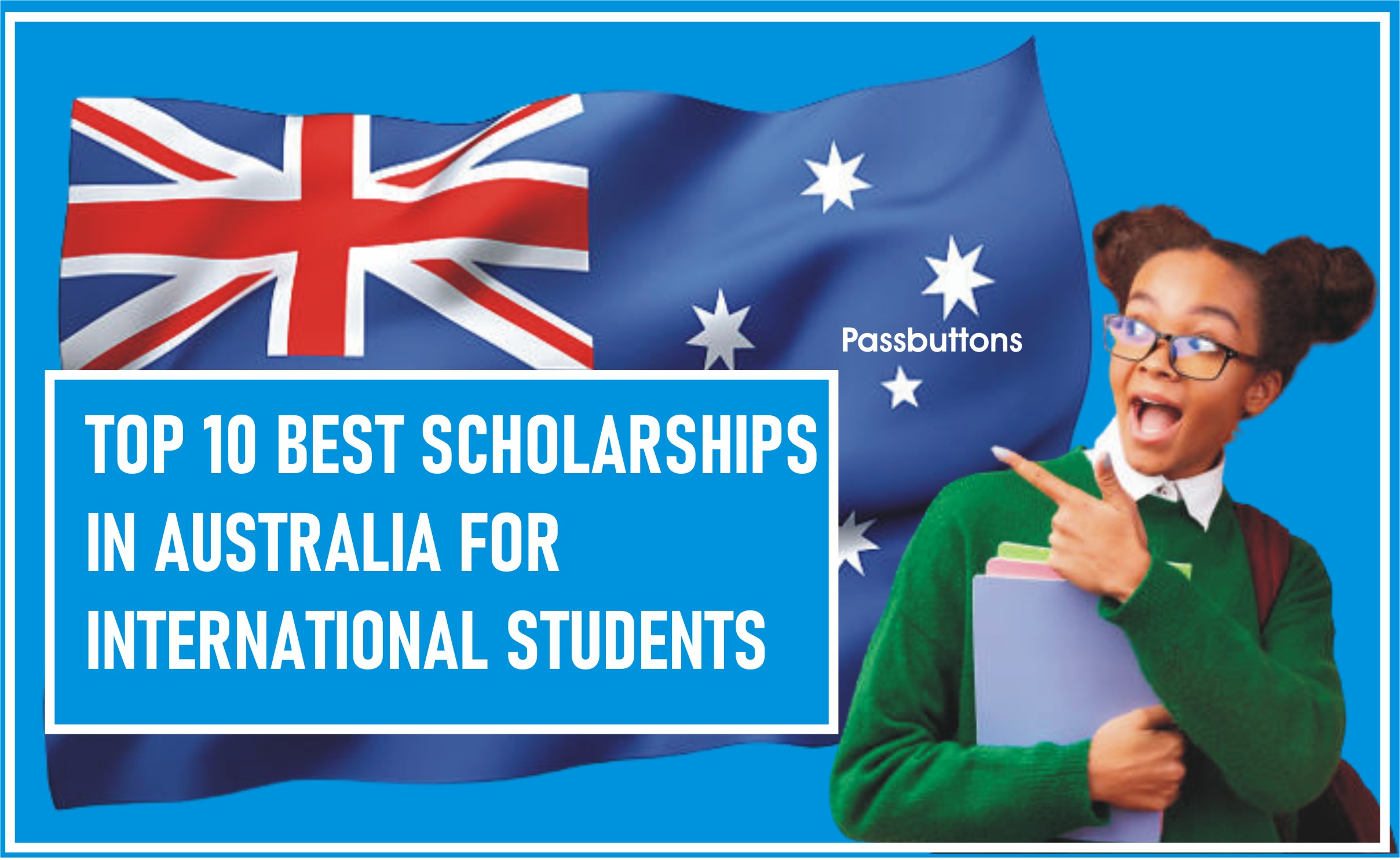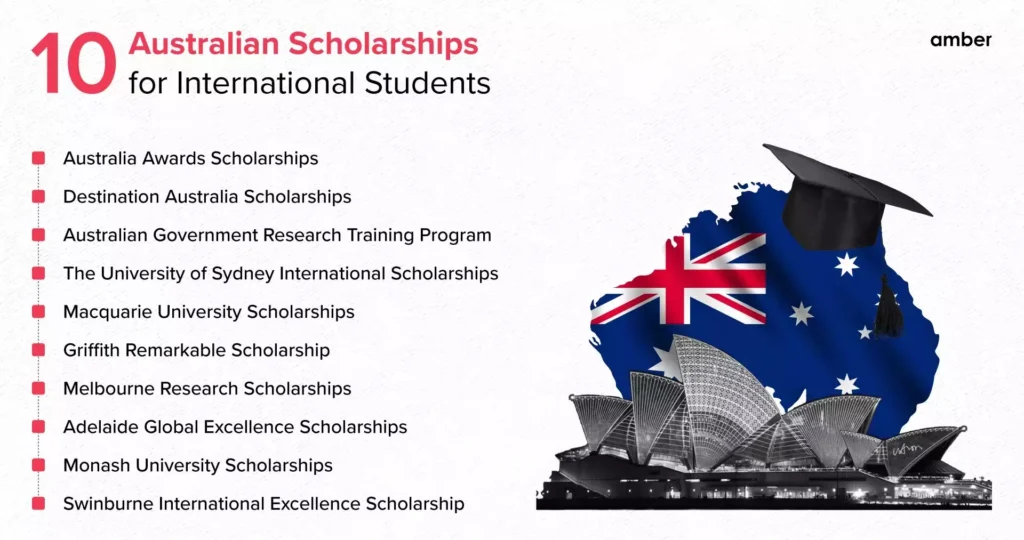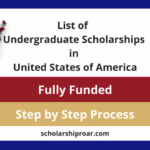(H1 – Main Title)
(Meta Description Suggestion: Discover how scholarships made studying in Australia possible for an international student. Read my personal story, tips for beginners, and a step-by-step guide to finding and applying for scholarships in Australia.)
Hey there, fellow dreamers!
I remember a time, not so long ago, when the idea of studying abroad felt like an unreachable star. Especially Australia. The very word conjured images of sun-drenched beaches, unique wildlife, and a vibrant, laid-back culture. But then, the cold splash of reality would hit: the tuition fees, the living costs, the seemingly insurmountable financial mountain. "How could someone like me, from a humble background, ever afford that?" I used to ask myself.
But guess what? That star, that dream, it wasn’t unreachable. And it all started with a single, powerful word: scholarships.
This isn’t just a guide; it’s my story. A story of late-night research, countless applications, a few rejections, and finally, the exhilarating taste of success that changed my life forever. If you’re dreaming of studying in Australia but think finances are a barrier, pull up a chair. Let me tell you how I navigated the world of scholarships and how you can too.
The Dream of Australia: More Than Just Academics (H2)
My fascination with Australia wasn’t just about getting a world-class education (though that was definitely a huge draw!). It was about immersing myself in a new culture, gaining a global perspective, and challenging myself in ways I never thought possible. I devoured documentaries, read blogs, and spoke to anyone who had ever been there. The more I learned, the more I knew it was where I needed to be.
But then came the practical part. A quick search for university fees and living expenses brought me crashing back to earth. It was a substantial investment, one my family simply couldn’t shoulder on their own. That’s when the magic word whispered into my ears: "scholarships."
At first, it felt like looking for a needle in a haystack. Were they even real? Were they only for straight-A students with groundbreaking research projects? My initial understanding was minimal, to say the least. But I decided I wouldn’t let that stop me. I was determined to find a way.
My Scholarship Hunting Ground: Where I Looked and What I Found (H2)
The first step, I quickly realized, was understanding what kinds of scholarships were out there. It wasn’t just one big pot of money; it was a complex ecosystem of funding opportunities. Here’s a breakdown of the main categories I stumbled upon, and where I spent most of my time hunting:
1. Australian Government Scholarships (H3)
These are often the most comprehensive and prestigious, and usually, the most competitive. But don’t let that deter you! They are designed to attract the brightest minds globally and often cover tuition, living expenses, health insurance, and even travel costs.
- Australia Awards Scholarships: This was the holy grail for many international students, including me. These scholarships aim to contribute to the development needs of Australia’s partner countries. They cover full tuition fees, return air travel, establishment allowance, living expenses (stipend), and even health cover. The application process is rigorous, often involving essays, interviews, and detailed proposals. I remember spending weeks perfecting my application for this one!
- Research Training Program (RTP) Scholarships: If you’re eyeing a Master’s by Research or a PhD, these are a fantastic option. They are provided by the Australian Government to universities, who then offer them to domestic and international students. They typically cover tuition fees and a living stipend. I didn’t apply for this myself as I was pursuing a coursework degree, but many of my friends did and found success.
My Tip: Start with the official "Study in Australia" government website. It’s a goldmine of information and links to various government-funded programs. Don’t be intimidated by the competitiveness; if you don’t apply, you definitely won’t get it!
2. University-Specific Scholarships (H3)
This category became my primary focus. Most Australian universities offer their own scholarships to attract talented international students. These can vary wildly in value and eligibility criteria.
- Merit-Based Scholarships: Many universities offer these based on your academic achievements. If you have excellent grades from your previous studies, you’re in a good position. I focused on showcasing my strong academic record and any relevant extracurricular activities.
- Faculty/Department Specific Scholarships: Sometimes, individual faculties or departments within a university have their own funding. For example, a "Faculty of Engineering International Scholarship" or a "Business School Excellence Award." These are often less competitive than university-wide ones because the pool of eligible applicants is smaller.
- Equity/Diversity Scholarships: Some scholarships aim to support students from specific regions, backgrounds, or those facing particular challenges. Always check if you fit any of these niches.
- Research Scholarships: Similar to RTPs, universities often have their own funding for research students, sometimes tied to specific projects or supervisors.
My Tip: Once you’ve shortlisted universities you’re interested in, dive deep into each university’s official website. Go to their "Scholarships" or "Future Students" section. Use their search filters to narrow down options for international students, your field of study, and your degree level. This is where I found the most relevant opportunities for myself.
3. External & Organization-Specific Scholarships (H3)
Beyond government and universities, there are various organizations, foundations, and even private companies that offer scholarships.
- Country-Specific Scholarships: Some countries have agreements with Australia or offer scholarships to their citizens to study abroad. Check with your home country’s Ministry of Education or relevant cultural exchange programs.
- Field-Specific Scholarships: Professional associations or industry bodies might offer scholarships related to specific fields like nursing, engineering, or IT.
- Community/Charitable Organizations: Foundations dedicated to education or specific causes might have scholarship programs.
My Tip: These are harder to find as they’re not always centralized. LinkedIn, professional associations, and even a good old Google search using very specific keywords (e.g., "scholarships for [your country] in Australia [your field]") can help unearth these gems.
The Application Maze: My Triumphs & Tribulations (H2)
Let me tell you, applying for scholarships is not for the faint of heart. It’s a marathon, not a sprint. There were moments of sheer frustration, long nights fueled by coffee, and the occasional urge to just give up. But it was also incredibly rewarding.
Here’s what my application journey looked like and what I learned along the way:
1. Understanding Eligibility Criteria: The Golden Rule (H3)
This is paramount. Each scholarship has specific requirements: minimum GPA, nationality restrictions, program of study, English language proficiency (IELTS/TOEFL scores), and sometimes even age limits.
- My Experience: I created a spreadsheet! Seriously. For every scholarship I considered, I listed the name, value, deadline, and all the eligibility criteria. If I didn’t meet even one core requirement, I moved on. This saved me a lot of wasted time and energy. Don’t apply for something you’re not eligible for – it’s a guaranteed rejection.
2. Gathering Documents: The Paperwork Mountain (H3)
Get ready for a stack of documents! Typically, you’ll need:
-
Academic Transcripts: Official records of your previous studies. Get them certified!
-
Proof of English Proficiency: IELTS or TOEFL scores are almost always required. Start preparing for these tests early if you haven’t taken them.
-
Curriculum Vitae (CV)/Resume: Highlight your academic achievements, work experience, volunteer work, and skills.
-
Letters of Recommendation: Usually from professors or employers who can vouch for your academic abilities and character. Choose people who know you well and can write strong, specific letters.
-
Personal Statement/Statement of Purpose/Essays: This is where you tell your story. Why do you want this scholarship? Why Australia? What are your academic and career goals? How will this scholarship help you achieve them?
-
Research Proposal (for research degrees): A detailed plan of your proposed research.
-
Passport Copy: For identification.
-
My Experience: I started collecting these documents well in advance. Asking for recommendation letters takes time, and getting official transcripts can involve administrative delays. I also learned to tailor my personal statement for each scholarship. A generic statement won’t cut it. Each scholarship has a specific aim, and your statement should reflect how you align with that aim.
3. Crafting the Personal Statement: Your Voice, Your Story (H3)
This was, without a doubt, the most challenging and crucial part of the application process. This is your chance to shine, to show them who you are beyond your grades.
-
My Approach: I didn’t just list my achievements; I wove them into a narrative. I talked about my passion for my chosen field, the challenges I’d overcome, and how studying in Australia would not only benefit me but also how I planned to contribute to the university community and, eventually, my home country. I focused on specific examples, not just vague statements.
-
Key Questions I Addressed:
- What are my academic and career aspirations?
- Why this specific program and university in Australia?
- What unique qualities or experiences do I bring?
- How will I use this education to make a positive impact?
- Why do I need financial assistance? (Be honest and humble, not entitled).
-
My Tip: Write multiple drafts. Get feedback from trusted mentors, teachers, or even native English speakers. Proofread, proofread, and proofread again! A single grammatical error or typo can undermine your credibility.
4. Meeting Deadlines: The Non-Negotiable (H3)
Scholarship deadlines are firm. Miss it by an hour, and your application might not even be considered.
- My Experience: My spreadsheet had a dedicated column for deadlines, highlighted in red! I aimed to submit my applications at least a week before the actual deadline to account for any technical glitches or last-minute document issues. Don’t underestimate the time it takes to fill out online forms or upload documents.
Beyond Academics: What Really Matters (H2)
While grades are important, I quickly learned that scholarships committees look for more than just high marks. They’re investing in individuals, in future leaders, and in people who will contribute positively to their community.
-
Leadership and Extracurricular Activities: Did you lead a club? Organize a charity event? Volunteer in your community? These experiences demonstrate initiative, teamwork, and a willingness to contribute. I made sure to highlight my involvement in a local environmental group and a student mentorship program.
-
Passion and Purpose: Why are you pursuing this particular field? What drives you? A genuine passion for your chosen area of study, articulated clearly, can set you apart.
-
Resilience and Growth: Did you face challenges? How did you overcome them? Showing self-awareness and a capacity for growth is highly valued.
-
Contribution: How do you plan to give back, both during your studies and after? Scholarship providers want to see that their investment will have a ripple effect.
-
My Experience: My interview for one of the scholarships focused heavily on these aspects. They wanted to know about my experiences outside the classroom, my motivations, and my plans for the future. It wasn’t just about what I knew, but about who I was.
My Top Tips for Aspiring Scholars: Learn from My Journey (H2)
So, after navigating this intricate maze and finally landing in Australia, here’s the distilled wisdom I’d love to pass on to you:
-
Start Early, Seriously Early! Scholarship application processes can take months, from research to submission. Give yourself ample time to find opportunities, prepare documents, write compelling essays, and get recommendations. Ideally, begin your research 12-18 months before your intended study start date.
-
Research Thoroughly & Be Organized: Use my spreadsheet method! Keep track of deadlines, requirements, and the status of each application. Don’t rely on memory.
-
Tailor Your Application: Do not send generic applications. Every scholarship has a purpose. Understand it and customize your personal statement, essays, and even your CV to align with that purpose. Show them why you are the perfect fit for their scholarship.
-
Polish Your Documents: Your personal statement, essays, and CV are your voice. They need to be impeccable. Write clearly, concisely, and persuasively. Get multiple people to proofread for grammar, spelling, and clarity.
-
Focus on Your "Why": Beyond your academic achievements, articulate your motivations, passions, and how this scholarship will help you achieve your goals and contribute to the world. Show, don’t just tell. Use specific examples.
-
Highlight Extracurriculars and Leadership: Demonstrate that you’re a well-rounded individual with initiative, leadership potential, and a commitment to your community.
-
Choose Your Referees Wisely: Select individuals who know you well academically or professionally and can write strong, specific, and positive letters of recommendation. Give them plenty of notice and provide them with all the information they need (your CV, personal statement, the scholarship details).
-
Be Persistent & Don’t Get Discouraged: You will likely face rejections. It’s part of the process. Learn from each one, refine your approach, and keep applying. My success came after several "no"s.
-
Network (If Possible): Connect with current or former scholarship recipients. They can offer invaluable insights and advice.
-
Stay Positive: The process can be overwhelming, but keep your dream alive. Your determination is your most powerful asset.
Conclusion: Your Australian Dream Awaits (H2)
Landing that scholarship felt like winning the lottery, but it wasn’t luck. It was the culmination of relentless effort, meticulous planning, and unwavering belief in my dream. My Australian dream became a tangible reality, and it has been everything I imagined and more.
If I, a beginner who once thought scholarships were just for a select few, could navigate this path, so can you. The journey to securing a scholarship in Australia is challenging, yes, but it is incredibly rewarding. It teaches you resilience, organization, and the power of articulating your own story.
So, take that first step. Start your research. Believe in your potential. Your Australian adventure, fully funded, might be closer than you think. Good luck, and I hope to see you Down Under!
Frequently Asked Questions About Scholarships in Australia (H2)
(H3) 1. Are scholarships in Australia hard to get?
Yes, generally, scholarships, especially full scholarships, are competitive. However, "hard" is relative. Your chances increase significantly if you meet all eligibility criteria, have a strong academic record, craft a compelling application, and apply strategically to multiple opportunities. Don’t let competitiveness deter you; many students succeed!
(H3) 2. When should I start applying for scholarships for Australia?
It’s highly recommended to start your scholarship research and application process at least 9-12 months before your intended study start date. Some prestigious scholarships, like the Australia Awards, open even earlier (18 months in advance). University scholarships often align with admission application cycles.
(H3) 3. Do I need perfect grades to get a scholarship in Australia?
While excellent academic performance is a significant advantage, "perfect" grades aren’t always a strict requirement. Many scholarships also consider other factors like leadership experience, extracurricular activities, volunteer work, your personal story, and your potential to contribute. Some scholarships are also based on financial need rather than solely academic merit.
(H3) 4. Can I apply for multiple scholarships at once?
Absolutely! In fact, it’s highly recommended. Applying for multiple scholarships increases your chances of success. Just ensure you tailor each application to the specific scholarship’s requirements and aims.
(H3) 5. What is the difference between a full scholarship and a partial scholarship?
A full scholarship typically covers all major expenses, including tuition fees, living costs (stipend), health insurance, and sometimes even travel allowances. A partial scholarship covers only a portion of these costs, often just tuition fees or a percentage of them. Both are valuable and can significantly reduce your financial burden.
(H3) 6. Do I need an offer of admission from an Australian university before applying for scholarships?
It varies. For some scholarships, especially university-specific ones, you might need to have applied for or even received an offer of admission before you can apply for their scholarships. For government scholarships (like Australia Awards), you often apply for the scholarship first, and if successful, you’ll then be guided through the university application process. Always check the specific scholarship’s guidelines.
(H3) 7. Where are the best places to search for Australian scholarships?
- Official University Websites: Go directly to the "Scholarships" or "Future Students" section of Australian universities you’re interested in.
- Study in Australia (Government Website): studyinaustralia.gov.au* (Please check for the most current official website as it may change slightly)
- Scholarship Search Engines: Websites like ScholarshipPortal, EduPass, or even general Google searches with specific keywords (e.g., "PhD scholarships in Australia engineering") can be useful.
- Your Home Country’s Government/Ministry of Education: They might have bilateral agreements or specific scholarships for citizens studying abroad.



